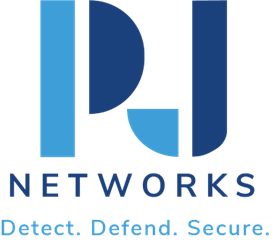Fortinet Rugged Firewalls — A Key Security Ingredient to Secure IoT
Introduction
Let’s discuss something that’s keeping me up at night — IoT security. If you work in IT security (which I assume you do if you’re reading this), you already know just how messy the Internet of Things can be. These devices show up all over the place: industrial plants, hospitals, smart cities. And they weren’t really designed to be secure.
I have been in this game since the early ’90s. I’ve witnessed threats change from script kiddies goofing off on IRC to real, state-sponsored cyber warfare. When the Slammer worm struck in 2003? Yeah, I was pretty much there, watching as SQL servers groaned and buckled. Now, we have IoT devices with built-in vulnerabilities just sitting there wide open on networks. And here’s the kicker — they’re frequently vital to the operations.
Enter: Fortinet Rugged Firewalls. These are designed for arenas where ordinary plastic-box firewalls simply won’t live. Industrial environments, freezing temperatures, dust-filled server rooms? No problem. But more importantly, they potentially deliver real, tangible security benefits for IoT networks — so long as you deploy them properly.
IoT Security Challenges
IoT security is not simply a buzzword we use to sound smarter. Most IT teams consider it a nightmare. Here’s why:
- Lack of built-in security. IoT connects devices that were intended to be cheap and light, meaning that they skimp on encryption, access controls, and patching.
- Massive attack surface. Each IoT device represents a gateway to your network. In an enterprise, that can be thousands of devices.
- Unpatchable devices. Some IoT vendors never issue updates at all. Or worse—discontinue support after a few years.
- Lack of visibility in traditional network architectures. If you can’t see it, you can’t secure it. I can promise you, though — if you aren’t segmenting, and you aren’t monitoring, you have IoT devices on your network that you don’t even know are there.
- AI-powered threats. (Yeah, I know, I’m not easily convinced by anything that is laced with the term AI-powered, but let’s face it—attackers are already employing machine learning models to automate and scale zero-day exploit discovery.)
So what do we do? We lock things down—properly.
Fortinet Solutions
Now, I’ve been deploying pretty much all types of firewall you can think of. And honestly? But they are not all good at managing IoT security. Fortinet’s hardened firewalls, though — another kettle of fish. They are intended for other environments, in which ordinary firewalls would not survive.
Is Fortinet Rugged Firewalls in your List?
- Industrial-grade durability These are designed for dust, heat, moisture and marginal power situations — ideal for manufacturing, utilities and critical infrastructure.
- Zero Trust enforcement. You want IoT devices communicating only with the systems they’re meant to communicate with? Netwitness has the policies for it.
- Deep packet inspection (DPI). Your average error goes over who is talking. Fortinet’s DPI digs into what they’re saying — key to spotting rogue IoT traffic.
The advanced features include:
- Integrated IPS and threat intelligence. Fortinet’s IDS/IPS system is continuously updated to detect new attack signatures (and it works).
- Segmentation like a pro. IoT has to be isolated — full stop. Fortinet delivers this easily with Secure SD-WAN and VLAN segmentation to isolate mission-critical devices.
Here’s what I tell clients — don’t just put a firewall up in front of your network and say you’re done. Condition your use of it to uphold network segmentation, threat detection, and device visibility — otherwise, you’re just adding decorative rack space with expensive-looking gadgets.
Use Cases: Real-world Deployments of IoT Security
You want real stories? Here you go.
-
Application of Industrial IoT in Manufacturing
A customer operating an automotive parts factory had IoT sensors focused on equipment condition. The problem? The sensors were directly attached to their main network — not isolated in any way. That meant lateral movement possible if even a single endpoint was compromised.
Solution: We deployed ruggedized Fortinet FortiGate firewalls that segregated IoT traffic and implemented strict access controls. ICS/SCADA systems were monitored separately, and we created a zero-trust model (trust is a liability in security).
-
Banking Sector Upgrades
The last three banks I did transformation for, were upgrading to zero-trust architectures. Unsecured connections were being left exposed on their IoT endpoints —such as ATMs and remote kiosks.
Solution: Implemented Fortinet’s firewalls to block all internal banking application traffic over encryption tunnels, to segregate the ATM data from in-house applications. Dynamic policy enforcement meant rogue IoT devices could never go unassessed without being flagged in real-time.
-
Connected Infrastructure in Smart Cities
I had one municipality I consulted for who had smart traffic lights as an issue—yes, traffic lights were connecting to the network using unsecured wireless protocols. Uncurdled ports on a public-facing system? That’s nightmare fuel.
Solution: Deploying Fortinet rugged IoT firewalls in-line to inspect every packet before it reached back-end servers. Easier attack surface to mitigate right away.
Quick Take
- IoT is inherently risky—don’t trust devices.
- Industrial-strength security with Fortinet rugged firewalls when normal firewalls fall short.
- The answer is not only buying security hardware, but deploying it correctly.
- Mutations in the networks: Why Segmentation, Zero Trust and real Threat intelligence are the difference between Security and Disaster Practice.
Conclusion
IoT security is a mess. Always has been. So we have the tools to fix this problem — if we actually use the tools properly.
Fortinet rugged firewalls? These aren’t just hardware; they’re a lifeline for securing IoT networks in industrial use cases, places such as financial, vital infrastructure, and similar things. settings. I’ve used them. I’ve seen them work. And what if your network contains IoT devices floating around unprotected? Let’s just say you might want to rethink your security policies — before an actual breach does it for you.
